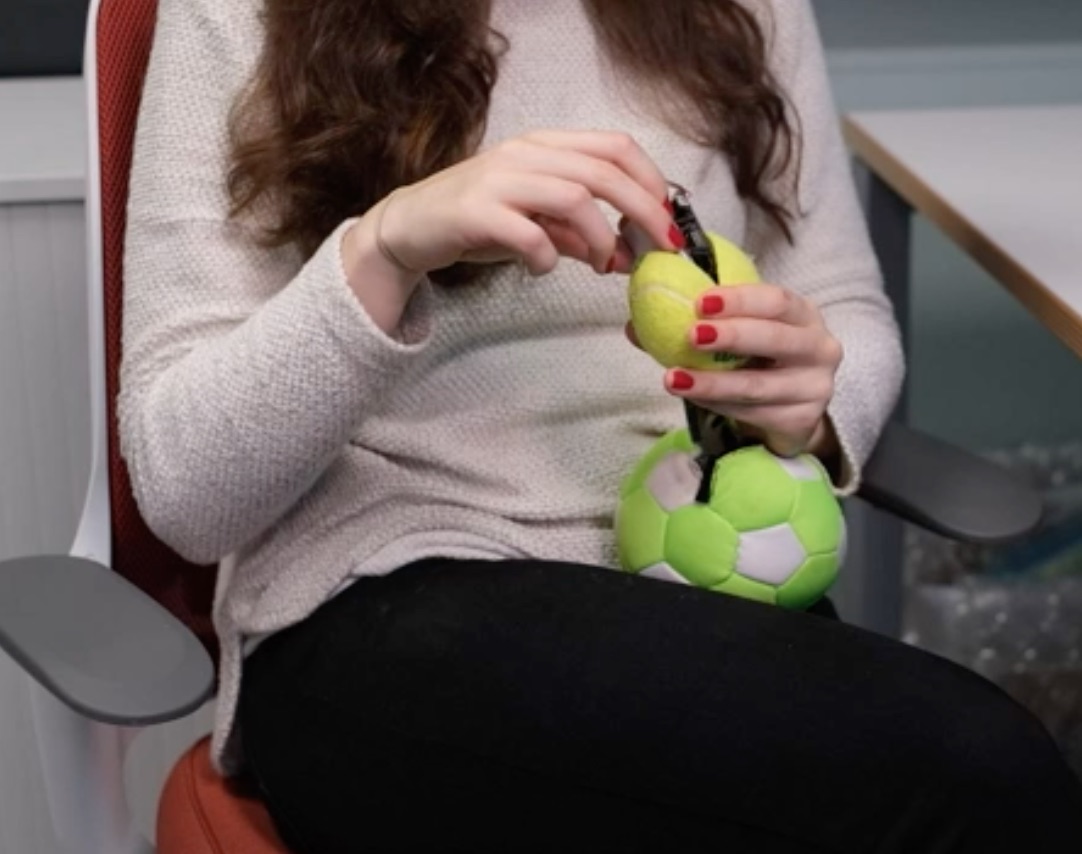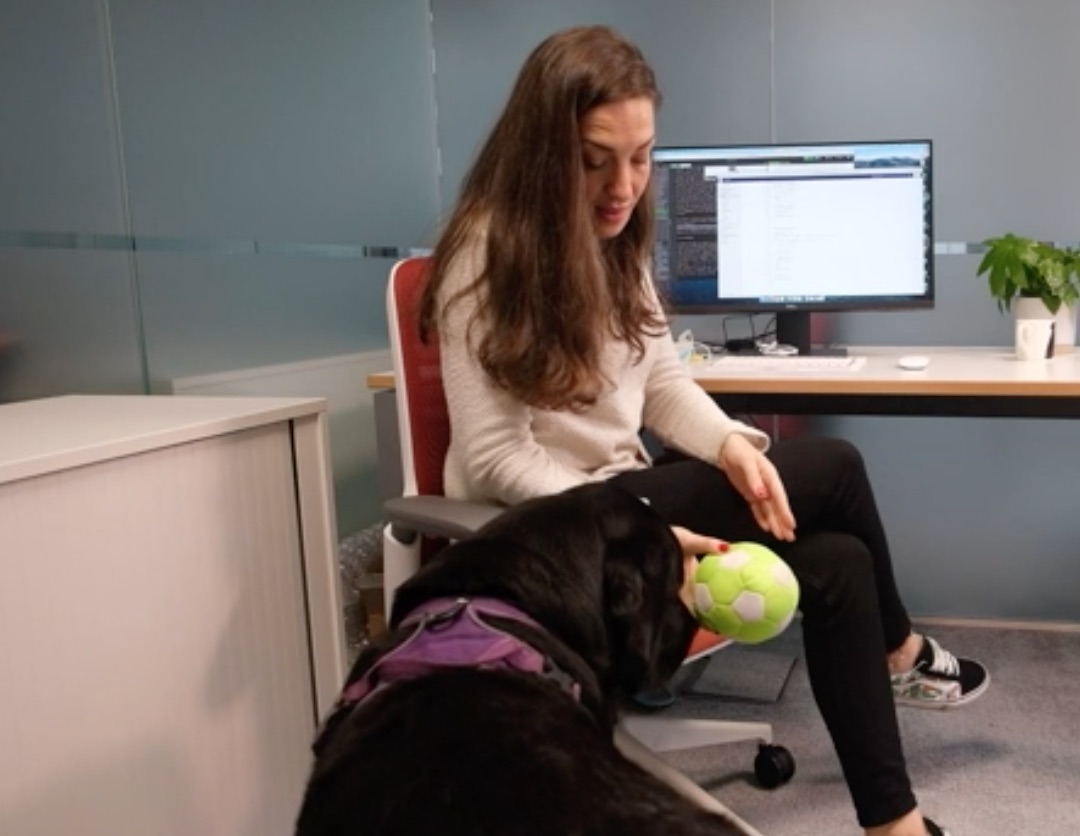Every time I’m out of town, all I can think about is my pets and how I wish I knew what they were doing. This common sentiment has sparked the invention of several products, from surveillance cameras to devices that can toss treats from remote locations.
Naturally, the next step in this process would be inventing some sort of phone we can call our pets on and vice versa. That’s what Dr. Ilyena Hirskyj-Douglas, an assistant professor at the University of Glasgow, attempted to do.

Using her 10-year-old Labrador Retriever Zack as a subject, Dr. Hirskyj-Douglas created a video call device that, in theory, can be used by dogs to contact their humans.
It Didn’t Really Work
Dr. Hirskyj-Douglas, who specializes in animal-computer interaction, fitted a ball with a motion-detecting device that triggers video calling. Whenever Zack picked up or nudged the device, it would contact her.

The research took place over the course of 16 days. During that time, Zack called Dr. Hirskyj-Douglas about five times a day and more than 50 times total. Sadly, almost all of the calls appeared to have been made by accident.
The published study includes notes from Dr. Hirskyj-Douglas’ log. One note summarizes:
“Dog rang me but was not interested in our call instead was checking for things in his bed.”

Sometimes, Zack slept next to the ball, which also triggered a call (“Dog sleeping cuddling the ball,” the log says.) Also, notably, when Dr. Hirskyj-Douglas called Zack, he never picked up.
This is a very early foray into research on dogs’ ability to use phones. Still, it seems this dream won’t become a reality any time soon.
Potential Explanations For The Failure
There are a few issues that plagued this experiment. First of all, Zack was never really trained on how to use the “phone.” Leading animal behaviorist, Dr. Patricia McConnell, also noted that the sample size of one dog and one person isn’t sufficient to make conclusions.
“A sample of one — one person and one dog — does not a study make, and I wish there had been more effort to train the dog to use the device instead of hoping he’d figure it out.”

Other experts referred to inconclusive research about whether dogs can actually recognize human faces on screens. Still, the inspiration behind the “dog phone” does pose some questions worth answering, they say. Dr. McConnell wonders:
“Do our dogs want to hear from us when we’re away from home? Or would they say, ‘Don’t call me, I’ll call you?’”

Ultimately, it’s inherently difficult to determine these answers. The published study acknowledges:
“It is possible that we humans might not know what an animal’s intentions are, or how they would interact with computer systems intentionally.”
Could Phoning Us Give Our Dogs Agency?
One thing driving the “dog phone” research is the fact that dogs don’t have a lot of agency in their lives. In an interview, Dr. Hirskyj-Douglas said:
“I thought something like this could help dogs in some way to have more control and have choices. We decide so much of their lives that maybe having this choice alone is kind of exciting in itself.”

The hope with the potential product is that it could possibly help with isolation and separation anxiety in dogs.
“I’m a crazy dog lady who would love to see more dog-controlled technology,” Dr. Hirskyj-Douglas said.
Though there aren’t any dog phones on the market now, this interesting study certainly “showed the future of dog technology can be very different from what it currently is.”
H/T: The Cut
Featured Image: CNN
 Toledo, United States.
Toledo, United States.
